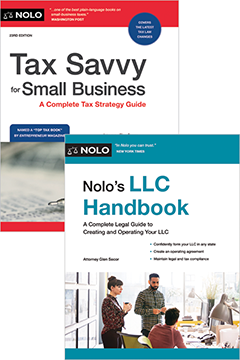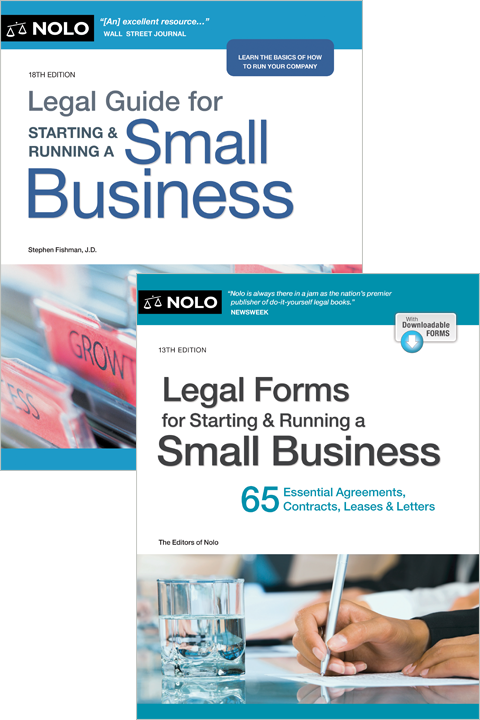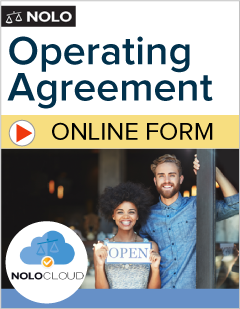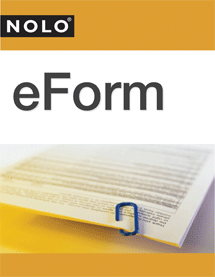Once you start a business, you automatically become a sole proprietor in Minnesota. But should still take steps to start your sole proprietorship, including choosing a business name, applying for licenses and permits, and obtaining an EIN.
If you've started selling your homemade jewelry online or running personal training sessions out of your garage, you've likely formed a sole proprietorship already—and you're not alone. When an individual starts a business (sells goods or services) and that person hasn't filed any legal documents with the state officially registering the business, then the person has automatically created a sole proprietorship.
A sole proprietorship is low maintenance. It doesn't typically require you to file any creation documents or submit renewal filings or fees, and you can usually report your income on your personal tax return. But sole proprietors are personally liable for the business's debts and obligations, so you might need to dip into your personal funds to satisfy any debts your business can't pay.
In Minnesota, you can establish a sole proprietorship without filing any legal documents with the Minnesota state government. Though no action is required to legally create a sole proprietorship, you should follow four simple steps to start your business:
- Choose a business name.
- File a Certificate of Assumed Name with the Minnesota Secretary of State (SOS).
- Apply for licenses, permits, and zoning clearance.
- Obtain an employer identification number (EIN).
For more information, read our article on how to start a business in Minnesota.
1. Choose a Business Name
In Idaho, a sole proprietor can use their own legal name or a trade name– also known as an "assumed name" or "doing business as" (DBA)—to conduct business. If you plan to use an assumed name or trade name for your business, it can't be the same name as any other company currently registered with the state.
It's also a good idea to choose a name that's not too similar to another registered business to avoid trademark infringement. Under trademark law, your trade name can't be used by someone else in a way that would cause confusion among consumers. So, if you use a name that's the same as or too similar to someone else's trademark and you both provide similar goods or services, then you could be infringing on that other person's trademark. If you find a competitor company already exists with a similar name, then it's best to choose another name.
For example, suppose you want to operate a farm stand under the name Lakes and Lilies Fresh Veggies. In the next town over, another farm stand called Land of Lakes and Lilies Fresh Veggies has been in business for years. Because your farm stand would have a similar name to a stand that already exists, you should choose a different name.
To make sure your business name is available, you should run a search in the following government databases:
- Minnesota SOS business search, and
- United States Patent and Trademark Office's Trademark Electronic Search System.
For more information, read our FAQ on how to choose and register a business name.
2. File a Certificate of Assumed Name With Minnesota
If you use a business name that's different from your legal name, Minnesota requires you to register your assumed business name with the SOS. (Minn. Stat. § 333.01 (2023).)
For instance, suppose Stacey Lindstrom runs a bookkeeping service under the name Rialto Ledgers. Because Stacey's business name, Rialto Ledgers, isn't the same as her legal name, she'll need to register her business name.
To file your assumed name certificate, submit a Certificate of Assumed Name Registration available on the SOS website. As of 2023, the filing fee is $30 by mail and $50 online.
3. Apply for Licenses, Permits, and Zoning Clearance
Depending on your business activities, you could need to apply for business or professional licenses. Minnesota's Department of Employment and Economic Development and Department of Labor and Industry have information about business and professional licenses.
The state government also has an e-licensing website you can use to browse for the most relevant licenses. You can search for licenses by topic or by agency.
You might also need to comply with local regulations, building permits, and zoning laws. Check with your city and county governments for more information.
4. Obtain an EIN
Sole proprietors who wish to have employees need to obtain an EIN. This is a nine-digit number issued by the IRS for tax reporting purposes. All businesses with employees are required to report wages to the IRS using an EIN. You can register for an EIN online with the IRS.
Sole proprietors without employees aren't required to have an EIN. Instead, you can use your Social Security number to report taxes. Nevertheless, you might want to obtain an EIN. Some banks require an EIN to open a bank account, and having an EIN can reduce the risk of identity theft.
In Minnesota, businesses are required to report taxes and file various employee reports. You might need to use your EIN when reporting business taxes. For more information on both business and employer taxes, check the Minnesota Department of Revenue (DOR) website.
Next Steps for Sole Proprietors
You should consider taking the following additional steps once you've established your sole proprietorship:
- Open a business bank account for your sole proprietorship. Using your assumed business name and EIN, set up a bank account to keep your business and personal finances separate. You should keep your business income and expenses separate from your personal funds so you can easily distinguish your business's financial profile for tax purposes. For instance, you can more easily report business deductions on your tax return if you've created a separate account.
- Obtain general liability insurance. Because sole proprietors are personally liable for all debts and obligations of the business, a business liability insurance policy can offer financial protection against unforeseen events. You should also consider other types of insurance for your business, including property and auto insurance. For more information, read our article on the types of insurance your small business might need.
- Report and pay taxes. Depending on your specific business activities, you could be required to report such items as sales tax and use tax. See the DOR website for more information, including details on Minnesota tax ID numbers, sales tax rates, corporation taxes, and withholding tax. Additionally, if you have employees, you must report and pay employment taxes on a periodic basis. (For more information, see our section on business taxes and deductions.)
To find out how to form a sole proprietorship in any other state, see our 50-state guide to establishing a sole proprietorship.
Consulting a Small Business Attorney
You might not need to submit paperwork to start a sole proprietorship in Minnesota. But your specific circumstances could require you to file certain forms and comply with certain rules and regulations. As a business owner, it's important to understand what steps you need to take to legally start and operate your sole proprietorship.
If you have business experience and only need to meet a few requirements to establish your sole proprietorship, you can probably do the work yourself. But if you need specific guidance or run into a complicated issue when starting your business, you should talk to a small business lawyer. A lawyer can help you register your name, file your taxes, and obtain licenses and permits.



